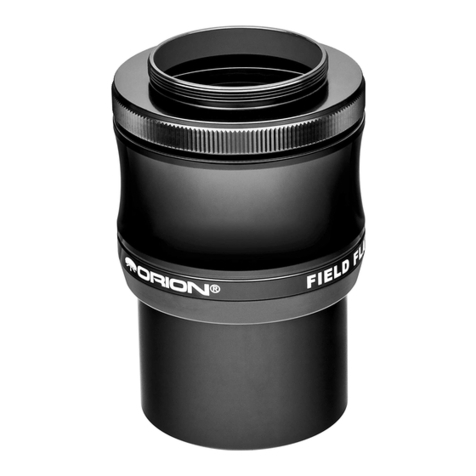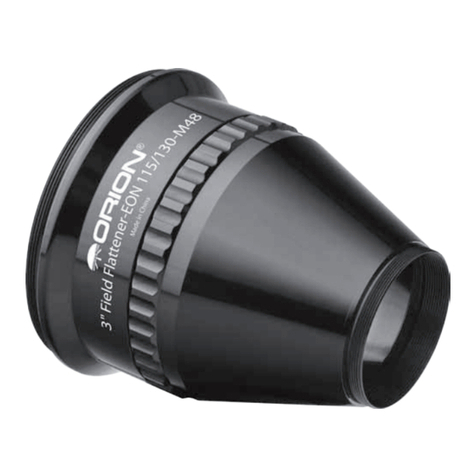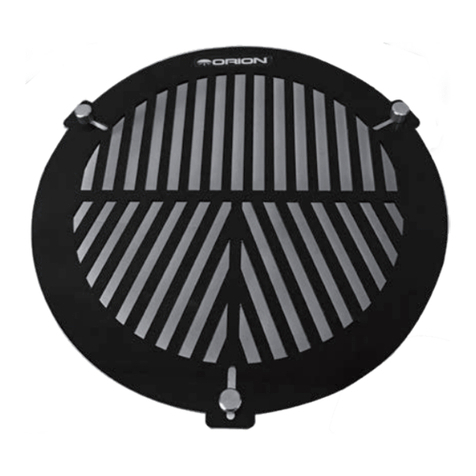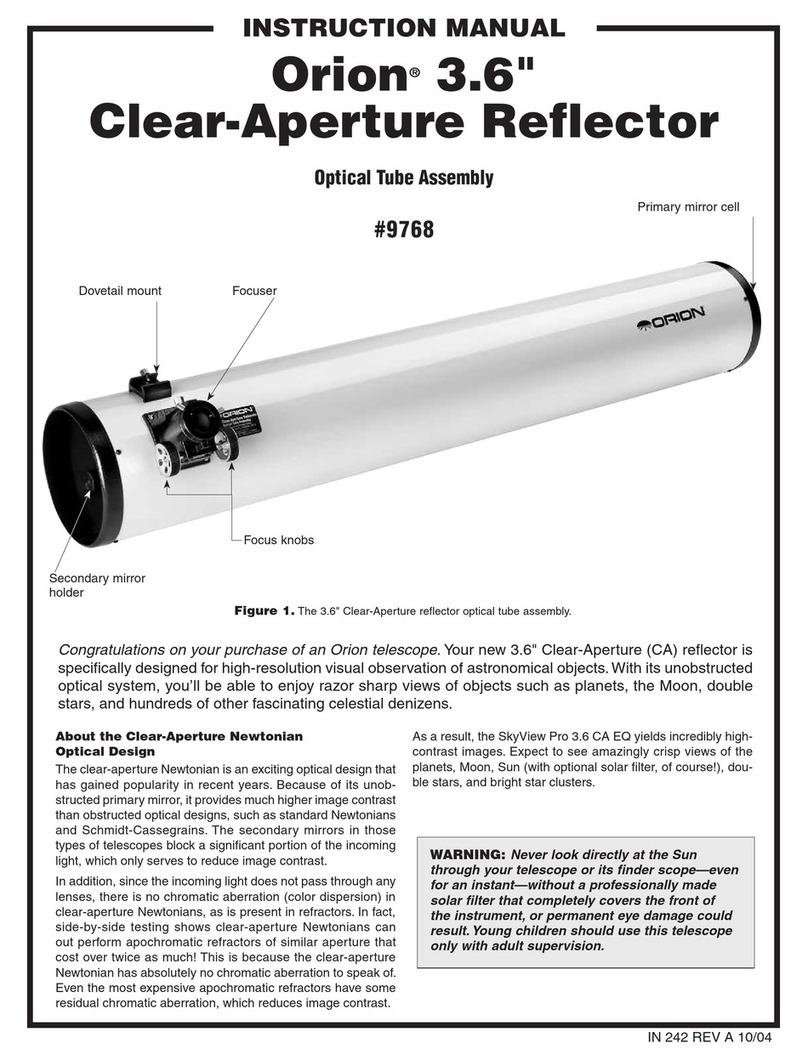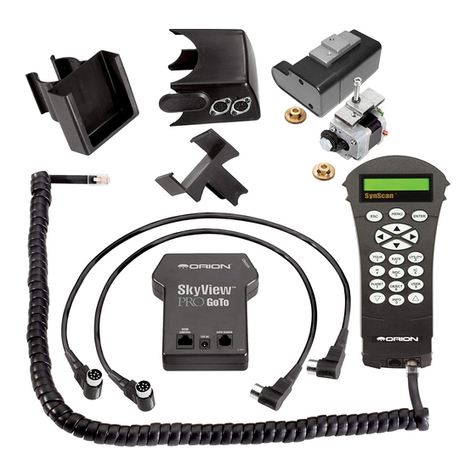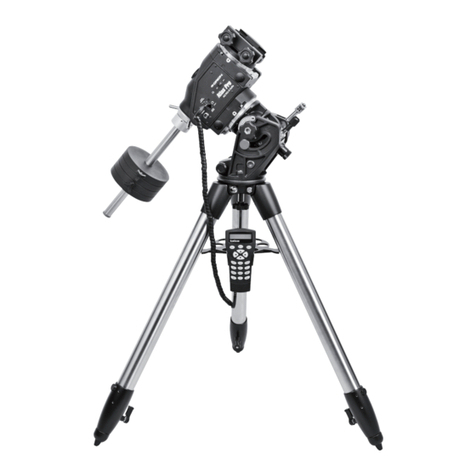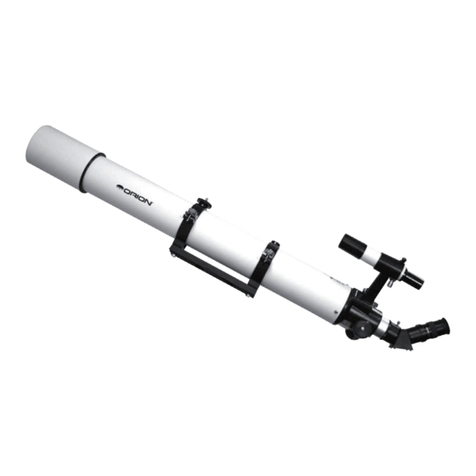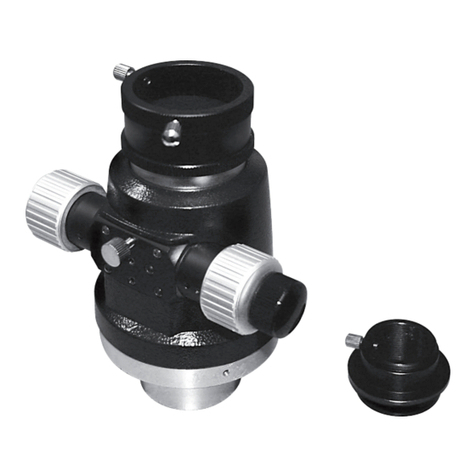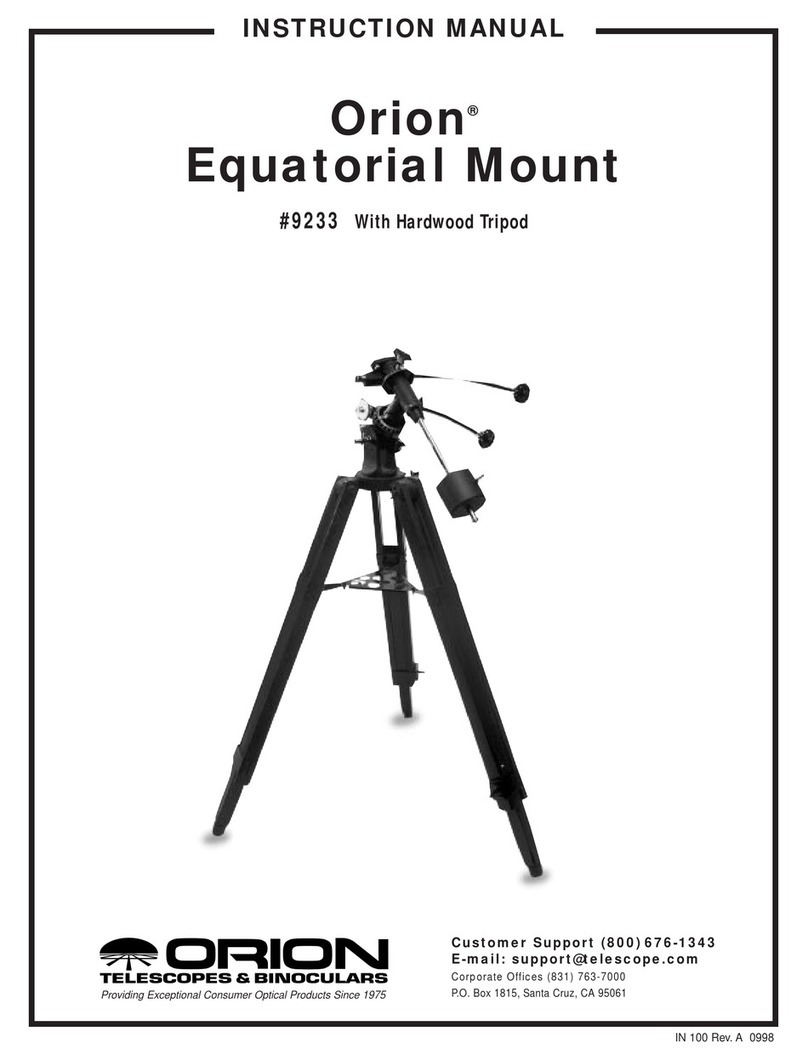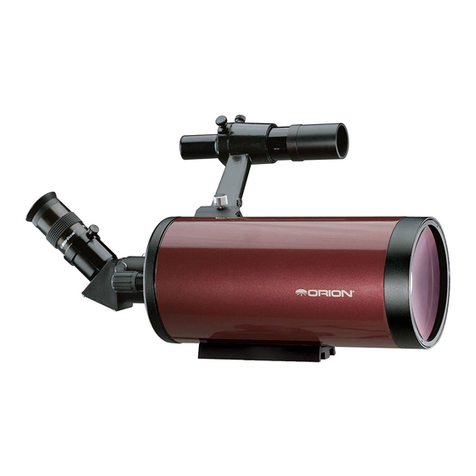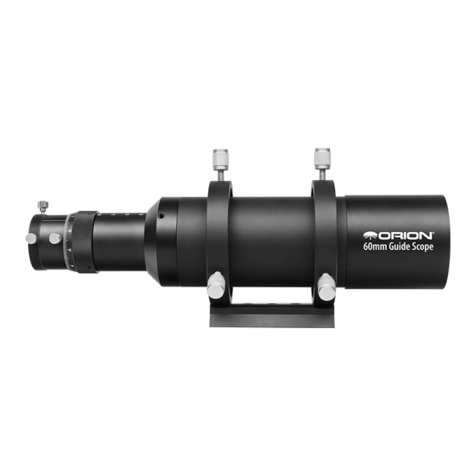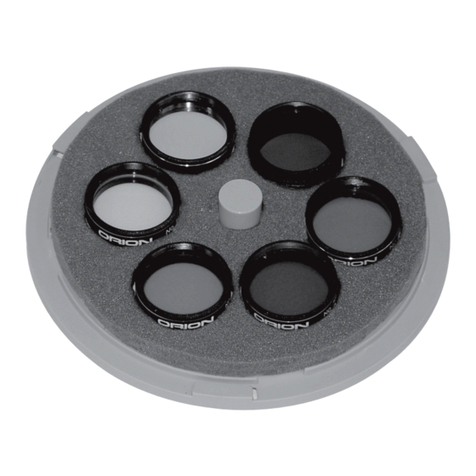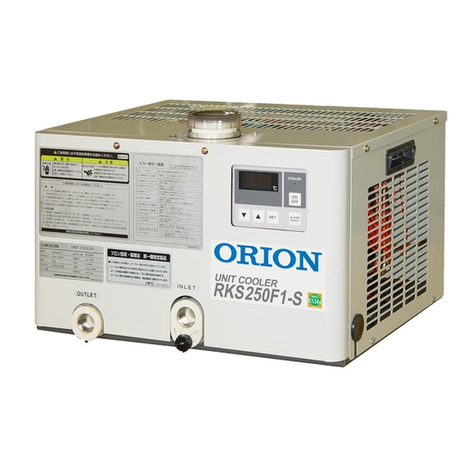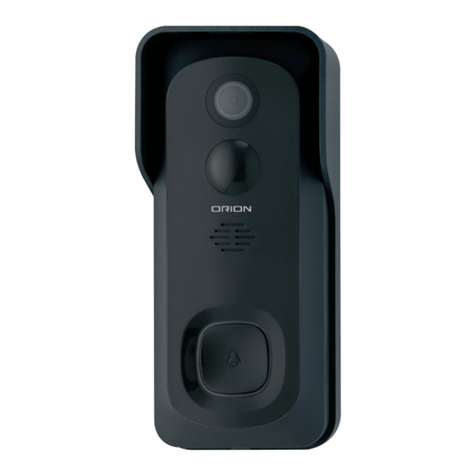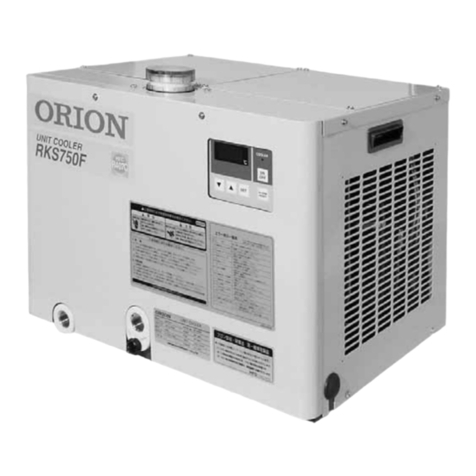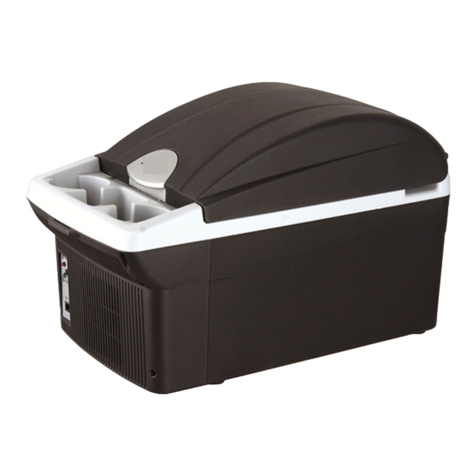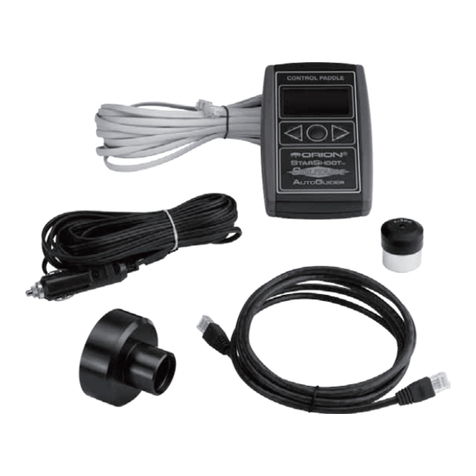
Congratulations on purchasing an Orion
MAK-500 90mm Spotting Scope!
Compact portability combined with solid construction and
fine optics make it an excellent spotting scope that you can
take virtually anywhere. Equally suited to visual observation
and photography, the Orion MAK-500 is a tremendously ver-
satile instrument. For visual use as a 29x spotting scope, no
additional parts are necessary. If desired, optional higher-
power eyepieces or a barlow lens can be added to obtain
magnification powers up to 160x. There is no need to buy a
camera adapter to use the scope as a 500mm (f/5.6) tele-
photo lens, but you will need an inexpensive T-ring adapter
for your make and model of camera.
About Maksutov-
Cassegrain Optics
Your new spotting scope is a Maksutov-Cassegrain catadiop-
tric design—a hybrid that combines the best features of both
reflector and refractor scopes. By way of lenses and mirrors,
the Mak-Cass design folds long focal length into a small
body. For example, the actual tube length of the Orion Mak-
500 is 178mm, while its rated focal length is 500mm, almost
three times longer. Light (an image) enters the MAK-500
through a front meniscus corrector lens and reflects off a
spherical primary mirror to a secondary mirror (the obstruc-
tion you see in the center of the meniscus lens), which
focuses and redirects it through a hole in the primary for
viewing through an eyepiece. Mak-Cass scopes are known
for their trouble-free performance, sharp and color-correct
images, and compact size.
Observing with the MAK-500
The MAK-500 comes with a 45° correct-image prism diago-
nal and a Sirius Plössl eyepiece of 17mm focal length. The
correct-image diagonal renders an image that is right-side-
up and left-to-right correct, unlike standard diagonals which
yield a backwards image with this type of telescope. (When
an eyepiece is inserted without a diagonal, the image
appears upside-down.)
The included Sirius Plössl eyepiece has a 1.25" barrel diame-
ter and produces a magnification (or power) of 29x. Other 1.25"
eyepieces can be utilized to provide higher or lower magnifica-
tions. Magnification is calculated by the following formula:
The MAK-500 itself has a focal length of 500mm (hence the
name!). So, the magnification yielded with the 17mm eyepiece
is 500/17 = 29.4. If you substitute an optional 10mm eyepiece,
the magnification would increase to 50x (500/10 = 50).
To insert the diagonal and eyepiece for visual use, follow
these steps:
1. Remove the spotting scope, eyepiece, and diagonal
prism from the carrying case.
2. Slide the diagonal prism into the accessory adapter on
the back of the lens and tighten the locking setscrew.
Then slide the eyepiece into the diagonal prism.
3. Tighten the locking setscrew on the diagonal to secure
the eyepiece in place.
Focusing the Mak-500 for Viewing or Photography
To bring an image into sharp focus, rotate the knurled knob on
the back of the scope. Turn the knob clockwise for close focusing
to approximately 5", counter-clockwise for distance to infinity.
Photography with the
MAK-500
The Mak-500 is a moderately fast f/5.6 telephoto lens with a
focal length of 500mm. Mak-Cass optics make it well-suited
to photography with a 35mm single lens reflex (SLR) camera
body. As a telephoto, the MAK-500 performs superbly on ter-
restrial subjects. Its light weight makes it hand-holdable for
photography in reasonably bright light (depending, of course,
on the ISO rating of the film used), while the 1/4"-20 plate on
the underside of the tube accommodates an optional tripod,
if desired. Note: Before the MAK-500 can be used as a tele-
photo lens, you will need an optional T-ring to mount your
particular camera to the scope. Orion Customer Support can
help you with this. Call (800) 676-1343.
Mounting a 35mm SLR camera body to the MAK-
500:
1. Loosen the locking screw on the accessory adapter so its
tip does not extend into the barrel.
2. Remove the eyepiece and the 45° erect-image diagonal
prism from the accessory adapter.
3. Thread an optional T-ring onto the accessory adapter.
2
T-Ring
Accessory Adapter
WARNING: Never look directly at the Sun
through your telescope or its finder scope—
even for an instant—without a professionally
made solar filter that completely covers the front
of the instrument, or permanent eye damage
could result. Young children should use this
telescope only with adult supervision.
Magnification =
Telescope focal length (mm)
Eyepiece focal length (mm)
